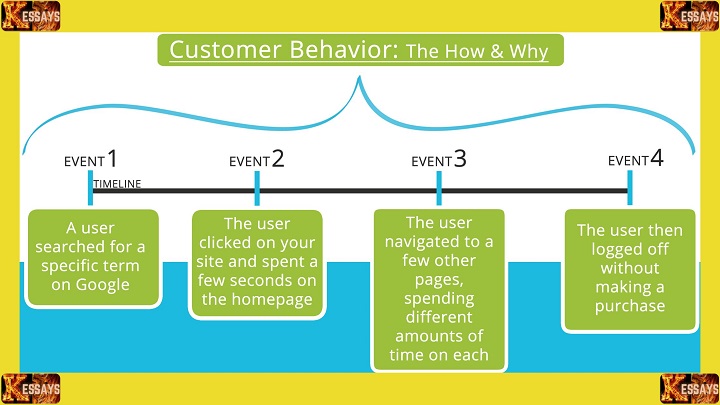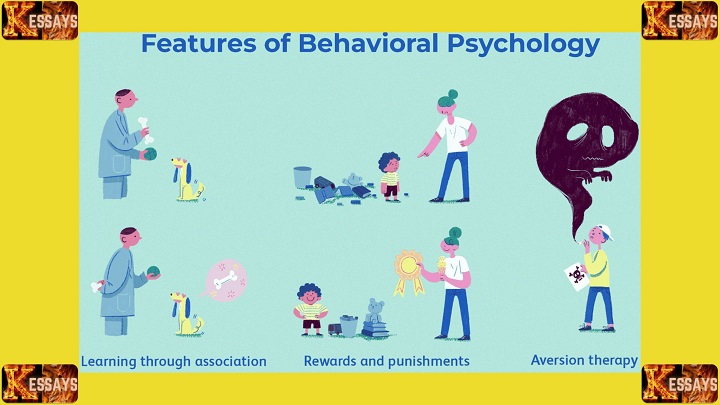Applied Behavior Analysis (ABA) is a scientific and evidence-based approach to understanding and modifying behavior. It utilizes principles of learning and behavior to analyze, assess, and intervene in various settings. ABA has gained prominence for its effectiveness in addressing a wide range of behaviors, from improving social skills in individuals with autism spectrum disorder (ASD) to reducing problem behaviors in clinical and educational settings. This article aims to provide a comprehensive overview of Applied Behavior Analysis, exploring its key concepts, applications, and the impact it has on individuals' lives.



I. Understanding the Core Principles of ABA
Behavior
Applied Behavior Analysis (ABA) places a strong emphasis on behavior as the central focus of analysis and intervention. ABA recognizes that behavior refers to any observable and measurable action or response exhibited by an individual. This includes a wide range of behaviors, such as verbal communication, motor skills, social interactions, and emotional responses. One of the key principles of ABA is that behavior is influenced by environmental factors. These factors can include physical surroundings, social interactions, and specific events or stimuli. By studying and analyzing behavior within its environmental context, ABA practitioners gain insights into the factors that contribute to the occurrence or maintenance of a behavior. ABA recognizes that behavior is learned and can be modified through various learning processes. This understanding allows ABA practitioners to apply evidence-based strategies to shape behavior, increase desirable behaviors, and decrease undesirable behaviors. The principles of learning, such as reinforcement and punishment, are utilized to bring about behavior change in a systematic and effective manner.Antecedents
Antecedents are events, circumstances, or stimuli that precede and set the occasion for a behavior to occur. ABA places significant importance on identifying and understanding antecedents as they provide valuable information about the conditions that prompt or trigger specific behaviors. By examining antecedents, ABA practitioners can gain insights into the environmental factors that influence behavior. Antecedents can take various forms, including verbal prompts, physical cues, social situations, or specific events. They can serve as signals or triggers that elicit specific behaviors in individuals. ABA practitioners carefully analyze antecedents to identify patterns and relationships between them and the behaviors of interest. Understanding antecedents allows ABA practitioners to develop effective intervention strategies. By manipulating antecedents, practitioners can modify the environmental conditions to promote desired behaviors or prevent the occurrence of undesirable behaviors. For example, if a child tends to engage in disruptive behaviors during a specific activity, modifying the antecedent conditions by providing clear instructions or visual cues can help promote appropriate behavior.Consequences
Consequences refer to the events or outcomes that follow a behavior. ABA recognizes that consequences play a crucial role in shaping future occurrences of a behavior. Consequences can be positive (reinforcement) or negative (punishment), and their application is determined by their impact on behavior. Positive reinforcement involves providing a reward or preferred consequence immediately following a desired behavior, thereby increasing the likelihood of that behavior occurring again in the future. For example, praising a child for completing a task can serve as positive reinforcement and encourage the child to continue engaging in the desired behavior. Negative reinforcement involves the removal of an aversive stimulus or an unpleasant event that increases the likelihood of a behavior occurring again. For instance, if a child engages in a specific behavior to escape or avoid a demanding task, the removal of the task following the behavior can reinforce its occurrence. Punishment, on the other hand, involves the application of an aversive consequence following an undesirable behavior, with the aim of reducing the likelihood of that behavior occurring again in the future. It is important to note that punishment should be used judiciously and in a manner that is ethically appropriate and avoids harm or adverse effects. ABA practitioners carefully analyze the consequences of behavior to determine their impact on its occurrence. By manipulating consequences, ABA practitioners can shape behavior by reinforcing desired behaviors and reducing the occurrence of undesirable behaviors. In conclusion, understanding the core principles of ABA, including behavior, antecedents, and consequences, provides a foundation for analyzing and modifying behavior effectively. By focusing on observable behaviors, identifying antecedents, and manipulating consequences, ABA practitioners can bring about positive behavior change and improve the lives of individuals across various settings and contexts.
II. The Process of Applied Behavior Analysis
Assessment
The assessment phase of Applied Behavior Analysis (ABA) is crucial for understanding the individual's behavior, skills, and environment. A comprehensive assessment involves various methods such as direct observation, interviews, and standardized assessments. This information gathering process helps identify the target behaviors that need to be addressed and provides a baseline measurement of their frequency and intensity. Additionally, the assessment helps identify potential reinforcers or punishers that can be utilized during intervention.Goal Setting
Clear and measurable goals are essential in ABA to guide the intervention process. These goals are established based on the assessment findings and the priorities identified for behavior change. Goals are specific, observable, and achievable within a certain timeframe. By setting clear goals, ABA practitioners and individuals involved can have a shared understanding of what behaviors need to be targeted and what outcomes are desired.Intervention
ABA interventions are highly individualized and tailored to meet the specific needs of the individual. These interventions are based on the principles of behavior and utilize empirically supported techniques. Strategies employed in ABA interventions include reinforcement, prompting, shaping, modeling, and functional communication training, among others. Reinforcement is a fundamental component of ABA interventions. It involves providing positive consequences immediately following a desired behavior to increase the likelihood of that behavior occurring again in the future. Reinforcement can take the form of tangible rewards, social praise, or access to preferred activities. By identifying and utilizing effective reinforcers, ABA practitioners can motivate individuals to engage in desired behaviors. Prompting is another strategy used in ABA to assist individuals in learning new skills or performing desired behaviors. Prompting involves providing cues or assistance to help the individual initiate or complete a behavior successfully. Prompting techniques can range from physical guidance to verbal or visual prompts, gradually fading them as the individual becomes more independent. Shaping is a technique used to shape complex behaviors by reinforcing successive approximations. It involves reinforcing behaviors that are closer and closer to the desired behavior until the target behavior is achieved. Shaping is particularly useful when teaching new skills or behaviors that require multiple steps or components. Modeling is the process of demonstrating a behavior for the individual to imitate. By observing a model performing a desired behavior, individuals can learn the behavior through observation and imitation. Modeling is particularly effective in teaching social skills or behaviors that require specific actions or sequences. Functional Communication Training (FCT) is an important intervention strategy in ABA, particularly for individuals with communication difficulties. FCT involves teaching alternative communication methods, such as sign language or picture-based communication systems, to replace challenging or problem behaviors. By equipping individuals with effective communication skills, problem behaviors can be reduced or eliminated.Data Collection and Analysis
Data collection is a crucial component of ABA to evaluate the effectiveness of interventions and make informed decisions about the intervention strategies. ABA practitioners systematically collect data on target behaviors, antecedents, consequences, and environmental variables. This data is collected using various methods, such as direct observation, checklists, or technology-based tools. The data allows practitioners to track progress, identify patterns, and make data-driven decisions regarding the modification of intervention strategies. Data analysis involves examining the collected data to determine the effectiveness of the interventions. ABA practitioners use various graphical representations, such as behavior graphs, to visually analyze the data and identify trends or changes in behavior over time. Data analysis helps determine whether the intervention is producing the desired outcomes, and if not, adjustments can be made to the intervention strategies based on the analysis.Generalization and Maintenance
ABA aims to promote the generalization of learned behaviors from the intervention setting to other relevant contexts. Generalization involves transferring the acquired skills or behaviors to natural or everyday environments where they are needed. By practicing and reinforcing the behaviors in various settings, individuals can demonstrate the behaviors consistently and independently across different situations. Maintenance refers to the long-term sustainability of behavior change. ABA practitioners focus on designing interventions that result in lasting behavior change. Strategies such as scheduled maintenance sessions and fading of prompts and reinforcement help individuals maintain the acquired behaviors independently over time. In conclusion, the process of Applied Behavior Analysis (ABA) involves a comprehensive assessment to identify target behaviors and establish measurable goals. Individualized interventions based on behavior principles and evidence-based techniques are then implemented. Data collection and analysis inform decision-making and allow for ongoing adjustments to the intervention strategies. Finally, promoting generalization and maintenance ensures that behavior change is sustainable and applicable in various settings. Through this systematic process, ABA promotes positive behavior change and enhances individuals' lives.
III. Applications of Applied Behavior Analysis
- Autism Spectrum Disorder (ASD): ABA has been widely used to enhance the skills and behaviors of individuals with ASD. It focuses on improving communication, social interactions, adaptive skills, and reducing challenging behaviors.
- Developmental Disabilities: ABA interventions have been effective in supporting individuals with developmental disabilities in acquiring functional skills, reducing problem behaviors, and increasing independence.
- Clinical and Mental Health Settings: ABA techniques have been successfully applied in clinical settings to address various mental health conditions, such as anxiety disorders, obsessive-compulsive disorder (OCD), and attention-deficit/hyperactivity disorder (ADHD).
- Education: ABA is widely implemented in educational settings to support learning and behavior management. It assists in teaching academic skills, promoting positive behavior, and reducing challenging behaviors.
Read Also: TechFite Case Study
IV. The Impact of Applied Behavior Analysis
- Improved Quality of Life: ABA interventions have shown significant improvements in individuals' quality of life by enhancing their functional skills, communication abilities, social interactions, and independence.
- Increased Learning Opportunities: ABA provides structured and individualized interventions that create optimal learning environments for individuals with diverse needs. It maximizes learning opportunities and facilitates skill acquisition across various domains.
- Behavior Management: ABA offers effective strategies for managing challenging behaviors. By systematically analyzing the antecedents and consequences of behaviors, ABA practitioners can develop intervention plans to reduce problem behaviors and promote adaptive alternatives.
- Evidence-Based Practice: ABA is firmly grounded in scientific research and relies on evidence-based practices. The rigorous application of principles, continuous data collection, and analysis ensure that interventions are based on reliable and validated techniques.


Comments are closed!